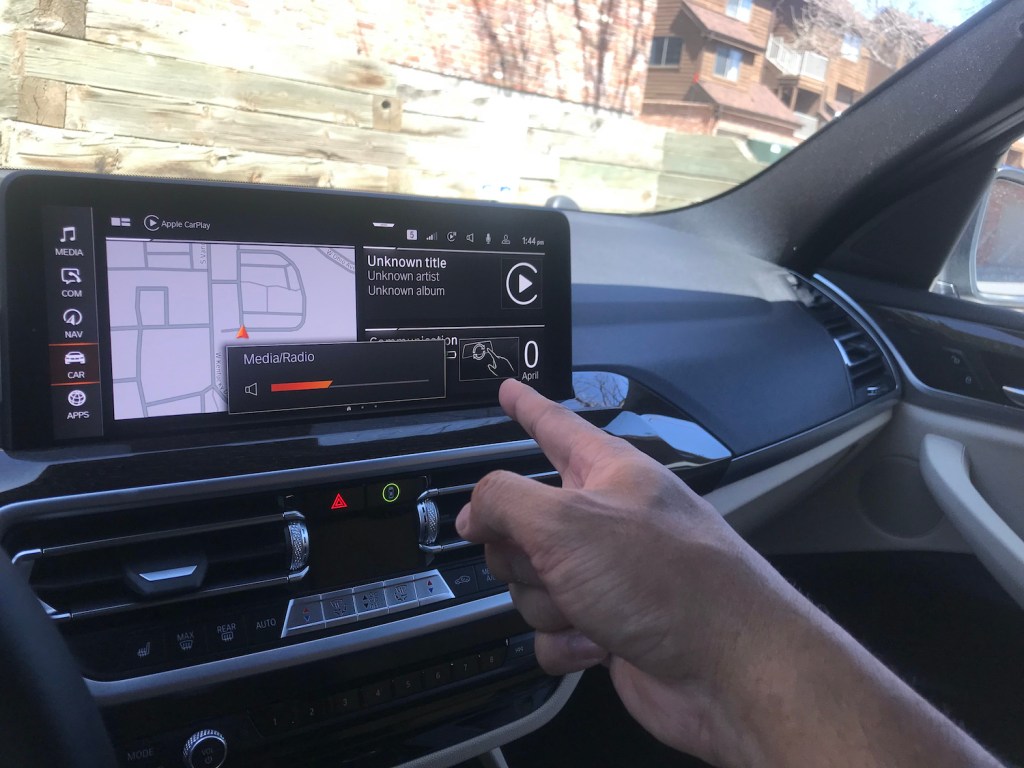
Hey Automakers, No One Uses Your Terrible Factory Navigation Systems
Factory navigation systems are just one of many features crammed into modern cars. Automakers love boasting about the fantastic technology inside their best vehicles. However, does anyone actually use the factory navigation systems? In 2022, there are enough superior alternatives, like Apple CarPlay and Google Maps, that most people don’t touch it. Why do automakers keep pushing factory navigation systems into their cars?
Factory navigation systems were once coveted

Long ago, in-dash navigation was the talk of the town. Vehicles with this feature integrated into the dash would cost thousands extra, and it was a selling point for many. However, even then, the factory navigation systems proved themselves to be slow, unreliable, and unresponsive. Most drivers used them because they had no other choice. Now? There are plenty of other alternatives, and they’re all better than the factory-installed options in cars.
Without smartphones, there was a time when navigation in your car was the best choice other than printing directions from MapQuest. In addition, only the most costly trim levels of every model came with the coveted feature. In other words, factory navigation was expensive but convenient.
Smartphone navigation apps are better

Essential navigation apps on your smartphone work significantly better and faster than in-car systems. Download free options like Google Maps, Waze, or even Apple Maps, and you’ve got a better system than you paid $3,000 for in your car. The smartphone apps are always up to date, but they’re also better for changing on the fly if you make a wrong turn. You’ve probably noticed the factory navigation systems take forever to load that you’ve changed your route, which can cause many problems.
Moreover, the phone’s screens are brighter, clearer, and even sometimes bigger than the ones in your car. Real-time reports for accidents and traffic is invaluable, as are police warnings from other drivers through apps like Waze. Furthermore, a holder for your phone only costs $20 or so, and they make phones as usable while driving as a factory-installed version would be. Lastly, modern smartphones’ responsiveness and ease of use are unmatched, especially by aging factory navigation.
Apple CarPlay and Android Auto make factory navigation useless

In modern vehicles, Apple CarPlay and Android Auto are available. You’d be hard-pressed to find models without these features available, even if they cost a little extra. Like factory navigation systems of old, these are now selling points for many car brands. This technology essentially transforms your car’s infotainment system into your phone. That means smartphone navigation, music, texting, calling, and more are available on the car’s display screen.
In short, Apple CarPlay and Android Auto turn your infotainment system into your phone’s interface. With tons of usable apps, customizability, and usually a smoother interface than your car provides, you can’t go wrong. The best part is that this superior technology isn’t expensive and often comes as a standard feature for many brands. That begs the question, why do automakers keep offering outdated factory navigation?
Why are automakers still offering factory navigation systems?
In 2022, why are automakers still offering navigation systems in their cars at all? With smartphone integration, Apple CarPlay/Android Auto, and more, there are many better alternatives. For example, one reporter from Auto Evolution claimed they tested a Mercedes-Benz A-Class with the new MBUX interface in 2018. In short, it didn’t work very well, mainly using voice commands. That got the reviewer thinking, “why don’t automakers use Google, Apple, or Amazon’s voice commands, which are already clearly much better.
However, when AE’s representative asked Mercedes-Benz that question, they claimed their system was better. Not only that but available in more languages, which is difficult to believe. As AE mentioned, Google spent a decade perfecting its voice command system with a team of expert software engineers and loads of other employees. It would be challenging for an automaker to strum up an in-house version that’s equal or better.
Some automakers are reaching out for help
According to Auto Evolution, some big carmakers are reaching out to software companies for help. For example, the GMC Hummer EV will use Android Automotive OS to power its infotainment system. Next, Volvo uses Google’s OS in its Recharge models, and Ford will use the same for vehicles coming in 2023.
High-quality systems like these are necessary for electric vehicles. Navigation systems aren’t just for finding your destination anymore. Instead, drivers need them for vehicle data like estimating total electric driving range, locating the next charging station, etc. Hopefully, more automakers will wake up and realize that no one uses their terrible factory navigation systems, and we shouldn’t have to pay for them anymore.



